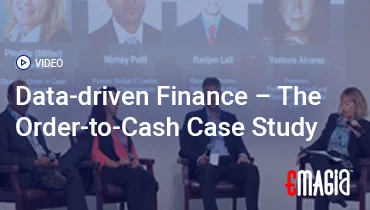Accounts Receivable (AR) factoring is a financial strategy that allows businesses to convert outstanding invoices into immediate cash. By selling receivables to a factoring company, businesses can improve cash flow, manage operations more effectively, and reduce the burden of debt collection. This comprehensive guide will delve into the intricacies of AR factoring, providing detailed insights into its calculation, benefits, and considerations.
Understanding AR Factoring
What is Accounts Receivable Factoring?
Accounts Receivable Factoring involves selling unpaid customer invoices to a third-party factoring company at a discount. The factoring company advances a percentage of the invoice value to the business and takes over the responsibility of collecting payments from customers. Once the customer pays the invoice, the factor releases the remaining balance to the business, minus a factoring fee.
How Does AR Factoring Work?
- Invoice Issuance: The business delivers goods or services and issues an invoice to the customer.
- Invoice Sale: The business sells the invoice to a factoring company.
- Advance Payment: The factor provides an immediate advance, typically 70-90% of the invoice value.
- Collection: The factor collects payment directly from the customer.
- Final Payment: Once the customer pays, the factor remits the remaining balance to the business, deducting the factoring fee.
Types of AR Factoring
- Recourse Factoring: The business retains the risk of non-payment. If the customer fails to pay, the business must reimburse the factor.
- Non-Recourse Factoring: The factor assumes the risk of non-payment due to customer insolvency, providing more security to the business.
Calculating AR Factoring
Key Components
- Invoice Value: The total amount billed to the customer.
- Advance Rate: The percentage of the invoice value the factor pays upfront.
- Factoring Fee: The fee charged by the factor, usually a percentage of the invoice value.
- Reserve: The portion of the invoice value held back until the customer pays.
Step-by-Step Calculation
- Determine the Advance:
Advance = Invoice Value × Advance Rate - Calculate the Factoring Fee:
Factoring Fee = Invoice Value × Factoring Fee Percentage - Compute the Reserve:
Reserve = Invoice Value – Advance – Factoring Fee
Example
Suppose a business has an invoice of $100,000, an advance rate of 80%, and a factoring fee of 2%.
- Advance: $100,000 × 80% = $80,000
- Factoring Fee: $100,000 × 2% = $2,000
- Reserve: $100,000 – $80,000 – $2,000 = $18,000
The business receives $80,000 immediately. Once the customer pays, the factor deducts the $2,000 fee and releases the remaining $18,000 to the business.
Factors Influencing AR Factoring Costs
Customer Creditworthiness
Factors assess the credit risk of the customers whose invoices are being factored. Higher credit risk may lead to higher factoring fees or lower advance rates.
Invoice Volume and Size
Larger volumes and higher invoice amounts can lead to more favorable terms due to economies of scale.
Industry Risk
Certain industries are considered riskier, affecting the terms and costs of factoring.
Payment Terms
Longer payment terms increase the risk for factors, potentially leading to higher fees.
Benefits of AR Factoring
- Improved Cash Flow: Immediate access to funds helps manage operational expenses.
- Outsourced Collections: Factors handle the collection process, saving time and resources.
- Flexible Financing: Factoring grows with sales, providing scalable funding.
- No Debt Incurred: Unlike loans, factoring doesn’t add liabilities to the balance sheet.
Considerations Before Choosing AR Factoring
- Cost: Evaluate the factoring fees and compare them with other financing options.
- Customer Relationships: Ensure the factor’s collection practices align with your customer service standards.
- Contract Terms: Understand the terms, including recourse provisions and contract duration.
- Confidentiality: Decide between disclosed and undisclosed factoring based on business preferences.
How Emagia Enhances AR Factoring
Streamlining AR Processes
Emagia offers advanced automation tools that streamline the accounts receivable process, making it easier to manage and prepare invoices for factoring.
Real-Time Analytics
With Emagia’s analytics, businesses can monitor cash flow and receivables in real-time, aiding in better decision-making regarding factoring needs.
Improved Customer Insights
Emagia provides detailed customer payment behavior analysis, helping businesses assess credit risk and negotiate better factoring terms.
Enhanced Efficiency
By automating routine tasks, Emagia reduces manual errors and accelerates the invoicing process, ensuring timely submissions to factors.
Integration Capabilities
Emagia seamlessly integrates with existing ERP systems, providing a unified platform for managing receivables and factoring activities.
Frequently Asked Questions
What is the difference between recourse and non-recourse factoring?
In recourse factoring, the business is responsible if the customer doesn’t pay the invoice. In non-recourse factoring, the factor assumes the risk of non-payment due to customer insolvency.
How does factoring affect my balance sheet?
Factoring can improve liquidity without increasing liabilities. In non-recourse factoring, receivables are removed from the balance sheet, while in recourse factoring, they may remain as contingent liabilities.
Can small businesses benefit from AR factoring?
Yes, small businesses can use factoring to improve cash flow, especially when they have limited access to traditional financing.
How quickly can I receive funds through factoring?
Funds are typically advanced within 24 to 48 hours after invoice submission and approval.
Are there any industries that commonly use AR factoring?
Industries like manufacturing, staffing, transportation, and construction frequently use factoring to manage cash flow.
Does factoring affect customer relationships?
It can, depending on the factor’s collection practices. Choosing a reputable factor that aligns with your customer service values is crucial.
What are the typical costs associated with factoring?
Factoring fees generally range from 1% to 5% of the invoice value, depending on various factors like customer creditworthiness and industry risk.
Is there a minimum volume requirement for factoring?
Requirements vary by factor. Some may have minimum volume thresholds, while others offer more flexible arrangements.
Can I choose which invoices to factor?
Yes, many factors offer selective factoring, allowing businesses to choose specific invoices to factor.
How does Emagia integrate with factoring processes?
Emagia’s platform automates and streamlines AR processes, providing real-time analytics and customer insights, which facilitate efficient and informed factoring decisions.
By understanding the mechanics and calculations involved in AR factoring, businesses can make informed decisions to enhance their financial operations. Tools like Emagia further streamline the process, offering automation and insights that drive efficiency and profitability.



